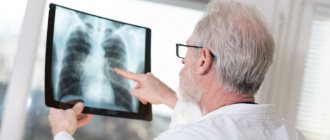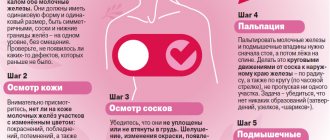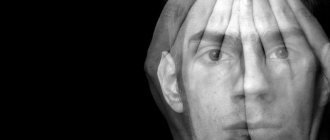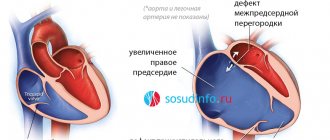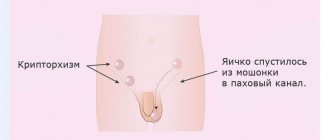Paroxysmal supraventricular tachycardia, abbreviated as PVT, is a type of arrhythmia. Accompanied by a heart rate (HR) from 140 to 220 or more beats per minute. It arises spontaneously and ends unexpectedly. The duration of PNT is at least three cardiac cycles, while maintaining a regular heart rhythm. The attack itself can last from a few seconds to several days.
PNT occurs due to disruption of the nervous regulation of cardiac activity or damage to other organs.
In the first case, excessive nerve stimulation leads to an increase in heart rate.
PNT can also occur in healthy people under the influence of certain factors:
- prolonged physical activity;
- stress;
- consumption of energy and stimulant drinks;
- bad habits.
In the case of organic damage, paroxysmal supraventricular tachycardia can be caused by:
- damage to the heart muscle due to ischemia, inflammation, intoxication;
- myocardial infarction;
- heart disease;
- pathology of the cardiac conduction system.
In addition to heart disease, other organs can affect paroxysmal supraventricular tachycardia. It is worth checking the functioning of the kidneys, lungs and gastrointestinal tract, especially if there are chronic or acute diseases.
Symptoms of paroxysmal supraventricular tachycardia
Paroxysmal tachycardia always has a sudden, distinct onset. The patient feels a push or compression, and sometimes a prick, in the area of the heart.
The attack may be accompanied by symptoms:
- dizziness;
- noise in the head;
- lightheadedness or fainting;
- sweating;
- nausea;
- trembling in the body.
To correctly diagnose tachycardia, it is important to conduct a thorough interview and examination of the patient. Highly qualified doctors of the Cardiology Center of the Federal Scientific and Clinical Center of the Federal Medical and Biological Agency will be able to quickly identify the disease.
Symptoms of extrasystole
The difficulty in diagnosing extrasystole lies in the absence of a characteristic, pronounced clinical picture. Symptoms depend on the state of the vegetative-vascular and cardiac systems, the age of the patient, the reactivity of the body and the form of the disease. In 70% of patients, arrhythmia is detected during a routine examination.
In case of serious pathologies, vegetative-vascular dystonia and heart diseases, extrasystole is manifested by the following symptoms:
- Heart pain.
- Anxious state.
- Strong heart beats.
- Increased sweating.
- Thrusts to the chest.
- Freezing of heart rate.
- Feeling of lack of air.
- Paleness of the skin.
Frequent heart contractions of a group or early nature provoke a decrease in cardiac output and a slowdown in cerebral, coronary and renal circulation. In patients with cerebral atherosclerosis, the following occurs:
- Aphasia.
- Paresis.
- Fainting.
- Dizziness.
In coronary heart disease, extrasystoles cause angina attacks.
Forecasts for patients with extrasystole
The duration and effectiveness of therapy, as well as the normal functioning of the patient after undergoing treatment, largely depend on ventricular dysfunction and the degree of pathology of the heart muscle. The most dangerous are considered to be extrasystoles provoked by myocarditis, cardiomyopathy, and acute myocardial infarction. Against the background of pronounced morphological abnormalities of the myocardium, cardiac complexes turn into ventricular or atrial fibrillation.
The course of supraventricular extrasystoles complicated by other diseases leads to the appearance of atrial fibrillation. The development of ventricular extrasystoles is dangerous due to persistent tachycardia and sudden cardiac arrest.
In healthy patients with no congenital or developed diseases of the cardiovascular system, extrasystole does not significantly affect the state of health, activity and lifestyle.
If you experience similar symptoms, consult your doctor
. It is easier to prevent a disease than to deal with the consequences.
Diagnostics
Tachycardia can be sinus and paroxysmal; they differ from the location of the electrical impulse that causes the heart to contract. To make a diagnosis, the doctor of the Federal Scientific and Clinical Center of the Federal Medical and Biological Agency performs a physical examination, collects anamnesis and prescribes tests.
Physical examination includes:
- external examination of the patient;
- heart rate measurement;
- blood pressure measurement.
Instrumental research:
- ECG;
- ECG with additional load on the body;
- daily ECG monitoring;
- ECHO;
- stress echocardiography;
- MRI;
- CT cardiography.
Treatment of extrasystole
Is it necessary to treat extrasystole?
A single heart rhythm disturbance can be caused by a rush of adrenaline or excessive caffeine consumption. Functional extrasystole, which occurs occasionally and does not cause discomfort to the patient, does not require treatment. For women, the physiological norm is cases of extrasystole a few days before menstruation and during ovulation.
Patients with vegetative-vascular dystonia may have a discomforting manifestation of extrasystoles. If abnormal heart rhythm is difficult to tolerate, it is necessary to reduce intense exercise, give up stimulants, be less nervous and include foods rich in magnesium in the diet.
With existing heart defects, cardiomyopathy
, coronary disease and other types of arrhythmia, extrasystoles aggravate the course of the disease, entail fibrillation of the ventricles or atria of the heart and are dangerous to the patient’s life. In such cases, a comprehensive scheme of therapeutic effects on the cardiovascular system of the body is required.
A sinking heart may be a sign of an overactive thyroid gland (hyperthyroidism). Excessive production of thyroid hormones poisons the circulatory system and the entire body, the heart muscle also reacts to the irritant.
Treatment of extrasystoles
Extrasystoles over 200 units/day should be alarming; systemic excess of the norm requires therapeutic correction. The treatment method for heart rhythm disturbances depends on the state of the cardiovascular system, etiology, severity of symptoms and side pathologies.
Stages of treatment:
- The normal functioning of the gastrointestinal tract and endocrine system is controlled.
- Foods rich in magnesium are added to the diet: lettuce, nuts, persimmons, dried apricots, raisins, prunes, cereals, bananas, apples, seaweed, beans.
- The load is adjusted: preference is given to walking at a moderate pace, swimming, and cycling.
- For patients with sleep and performance problems due to heart fluctuations, the cardiologist may prescribe tranquilizers or sedatives.
Prevention
Prevention lies in early diagnosis. Often, success directly depends on the patient and his attitude towards his health. Basic recommendations that should be followed during prevention:
- moderate regular physical activity;
- proper nutrition;
- rejection of bad habits;
- avoidance of situations that lead to stress and cause anxiety;
- compliance with the instructions of the attending physician.
The main thing is to diagnose tachycardia in a timely manner in order to move on to prevention in time. You can get acquainted with the programs of our center by following the link.
Causes of extrasystole
Extrasystoles are the most common subtype of arrhythmia, which periodically occurs in 65% of absolutely healthy people. With a normal heart rhythm there should be about 200 ventricular and 200 supraventricular extrasystoles per day. At moments of failure, up to tens of thousands of extrasystoles are recorded.
The nature of extrasystole can be organic (there are cardiac pathologies) or neurogenic (functional). Functional extrasystole develops when:
- Stress.
- Neuroses.
- Taking medications.
- Cervical osteochondrosis.
- Neurocirculatory dystonia.
- Intense physical activity.
- Abuse of nicotine, alcohol, caffeine-containing drinks.
An episodic increase in the number of daily extrasystoles does not pose a danger to healthy people; such surges in medicine are called “cosmetic arrhythmias.” Heart rhythm disturbances must be monitored and corrected in patients with organic heart pathologies.
Causes of organic extrasystole:
- Cardiosclerosis.
- Heart defects.
- Myocardial infarction.
- Inflammatory process.
- Cardiac ischemia.
- Ion metabolism disorders.
- Circulatory failure.
- Systemic diseases involving the heart.
How to treat paroxysmal supraventricular tachycardia
There are several treatment options at the FMBA center. Depending on the severity of the illness, the attending physician may place you in the therapeutic department. You will be under the constant supervision of professionals and receive timely medical care. This is usually drug therapy. If the symptoms of standard therapy are not enough, then you may be offered catheter ablation of the arrhythmia. At the same time, by puncture access under local anesthesia, under X-ray control using a catheter, an accurate diagnosis of the source of arrhythmia is made and, by precisely influencing it with a radiofrequency pulse or cold, the cause of paroxysmal tachycardia is eliminated.
Extrasystole
History and objective examination
The main objective method for diagnosing extrasystole is an ECG study, however, it is possible to suspect the presence of this type of arrhythmia during a physical examination and analysis of the patient’s complaints.
When talking with the patient, the circumstances of the occurrence of arrhythmia are clarified (emotional or physical stress, in a calm state, during sleep, etc.), the frequency of episodes of extrasystole, and the effect of taking medications. Particular attention is paid to the history of past diseases that can lead to organic heart damage or their possible undiagnosed manifestations. During the examination, it is necessary to find out the etiology of extrasystoles, since extrasystoles with organic heart damage require different treatment tactics than functional or toxic ones. When palpating the pulse on the radial artery, an extrasystole is defined as a prematurely occurring pulse wave followed by a pause or as an episode of pulse loss, which indicates insufficient diastolic filling of the ventricles.
When auscultating the heart during extrasystole, premature I and II sounds are heard above the apex of the heart, while the I tone is strengthened due to low filling of the ventricles, and the II sound is weakened as a result of a small ejection of blood into the pulmonary artery and aorta.
Instrumental diagnostics
The diagnosis of extrasystole is confirmed after an ECG in standard leads and daily ECG monitoring. Often, using these methods, extrasystole is diagnosed in the absence of patient complaints. Electrocardiographic manifestations of extrasystole are:
- premature occurrence of the P wave or QRST complex; indicating a shortening of the pre-extrasystolic coupling interval: with atrial extrasystoles, the distance between the P wave of the main rhythm and the P wave of the extrasystoles; with ventricular and atrioventricular extrasystoles - between the QRS complex of the main rhythm and the QRS complex of the extrasystoles;
- significant deformation, expansion and high amplitude of the extrasystolic QRS complex during ventricular extrasystole;
- absence of the P wave before the ventricular extrasystole;
- following a complete compensatory pause after a ventricular extrasystole.
Holter ECG monitoring is a long-term (over 24-48 hours) ECG recording using a portable device attached to the patient’s body. Registration of ECG indicators is accompanied by keeping a diary of the patient’s activity, where he notes all his sensations and actions. Holter ECG monitoring is performed for all patients with cardiac pathology, regardless of the presence of complaints indicating extrasystole and its detection with a standard ECG.
The identification of extrasystole, not recorded on the ECG at rest and during Holter monitoring, can be done by the treadmill test and bicycle ergometry - tests that determine rhythm disturbances that appear only during exercise. Diagnosis of concomitant cardiopathology of an organic nature is carried out using ultrasound of the heart, stress echo-CG, and MRI of the heart.
Complications and dangers of extrasystole
The danger of frequent group extrasystoles lies in their degeneration. Ventricular oscillations are transformed into paroxysmal tachycardia and ventricular fibrillation, and atrial oscillations, during dilatation, are transformed into atrial flutter or atrial fibrillation. Undiagnosed extrasystoles in time lead to chronic failure of the renal, coronary and cerebral circulation.
Algorithm of action in case of a sudden attack of arrhythmia:
- Provide access to fresh air, loosen tight clothing.
- Relax, calm down, take a horizontal position.
- In a stressful situation, take valerian, motherwort or Corvalol. For patients with frequent attacks of anxiety and fear, a neurologist can prescribe Persen, Gidozepam.
- If the condition worsens, you must call emergency help.
Expert advice
Despite the fact that most often EVEs are relatively harmless, if they occur frequently and are accompanied by symptoms (feelings of freezing, interruptions in heart function, dizziness, feeling of lightheadedness), you should consult a doctor to find out the cause, including examination for cardiac problems. and other diseases. I try to explain to my patients that eliminating the causative factor is of no small importance in the treatment of EVE. Therefore, I give recommendations for lifestyle changes: you need to quit smoking, try to avoid severe stress, and significantly limit the consumption of alcohol and coffee. If a person develops signs of EVE while taking medications, be sure to tell the doctor about it. Reducing the dosage or changing the medication often helps get rid of extrasystoles.
Classification of ventricular extrasystoles
Under certain circumstances, ventricular extrasystole causes a severe form of arrhythmia - ventricular tachycardia, which turns into fibrillation. And this condition is the most common cause of sudden coronary death.
Lown classification
The classification of PVCs has changed several times following diagnostic and prognostic needs. Extrasystoles in them were distributed according to quantitative values, location and frequency of occurrence. For about 15 years in cardiology they used the classification of ventricular extrasystoles according to Lown and Wolf (B. Lown and M. Wolf). They proposed it for the gradation of gastric extrasystoles in post-infarction patients. A few years later, it was adapted for patients without a history of heart attack.
This classification reflects the quantitative and morphological signs of PVCs (based on the results of a 24-hour ECG):
| Class | Characteristics of ventricular extrasystole |
| Extraordinary layoffs are not recorded | |
| 1 | Less than 30 single extrasystoles in any 60 minutes during the day |
| 2 | More than 30 single extrasystoles during any hour of monitoring |
| 3 | There are (polymorphic) extraordinary contractions occurring in different foci of excitation |
| 4A | There are two extrasystoles in a row emanating from one focus of excitation (monomorphic) |
| 4B | There are paired polymorphic extrasystoles |
| 5 | There are polymorphic PVCs passing in one gulp of 3–5, registration of paroxysmal ventricular tachycardia is possible |
According to Lown's classification, class 1 is a benign condition, rather considered as a functional disorder without circulatory impairment and clinical signs. Starting from class 2, ventricular extrasystole has a poor prognosis, being associated with an increased risk of developing fibrillation and cardiac arrest.
Gradation of extrasystoles by location, time and frequency of occurrence
There is a classification of ventricular extrasystole according to the place of origin of impulses and the number of foci of excitation:
- extrasystoles emanating from one focus are called monotopic;
- PVCs that originate in several foci are polytopic;
- right ventricular extrasystole;
- left ventricular extrasystole.
According to the time of occurrence, ventricular extrasystoles are divided into early (recorded at the beginning of diastole), interpolated, appearing in the middle between two beats, and late, occurring at the very end of diastole. Early extraordinary contractions according to the ECG sign are called “R on T” (layering of two teeth on top of each other). They are caused by organic changes in the myocardium. According to Lown, this type of ventricular extrasystole is classified as class 5.
In cardiology, there is a concept of a statistical daily “norm” of VES if they are well tolerated. There is no such norm for early extrasystole - it should not exist at all. Average or interpolated is the majority of the VES (up to 80%). Its average normal indicator is considered to be up to 200 extraordinary contractions per day. Late extrasystoles almost overlap the subsequent normal contraction. Their permissible daily quantity is up to 700. Today, the medical community uses the RJ Myerburg classification, which reflects the shape and frequency of ventricular extrasystoles:
| By frequency | According to morphology | ||
| 1 | less than 1 in 60 minutes - rare; | A | Single from one source |
| 2 | 1–9 per hour - infrequent; | B | Single from different foci |
| 3 | 10–30 per hour – moderately frequent; | C | Doubles |
| 4 | 31–60 per hour - frequent; | D | Unsustained ventricular tachycardia |
| 5 | more than 60 per hour - very frequent. | E | Sustained ventricular tachycardia |

